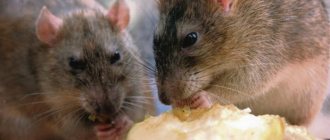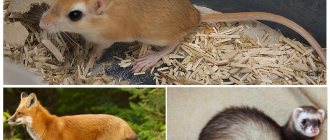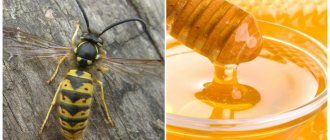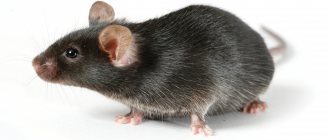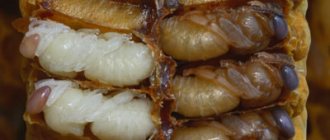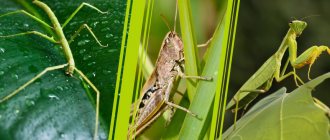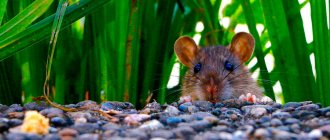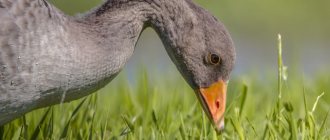The mouse family is the largest order of mammals. There are more than 300 species, 1500 varieties in the world. Among them there are herbivores and omnivores. Some breeds of mice were bred artificially as pets. Mice are widespread across all continents except Antarctica. There are no rodents high in the mountains. There are about 13 of them in Russia. Representatives of different types of mice differ in size and color.
Description of the rodent
— Advertising —
The body length of the house mouse is 6.5-9.5 cm. The length of the tail is about 60% in relation to the length of the body, its surface is covered with horny scales, which are arranged in rings, as well as short sparse hairs. The weight of adult individuals is from 12 to 30 g. The ears are round and small. The fur is dark or brownish-gray, the belly is ash-gray or white. Desert mice are lighter in color, their fur is yellowish-sandy, and their bellies are white. Domesticated mice come in white, black, yellow, blue-gray and variegated colors. Females have 5 pairs of nipples.
General characteristics
A mouse is a small mammal with an elongated body, a pointed muzzle, and large oval ears.
The size of the animal can vary from five to twenty centimeters, the body length depends on the species; large artificial breeds are called decorative breeds.
A distinctive feature of mice is their long flexible tail, which has no hair or is covered with sparse, coarse hair.
The characteristic features of the appearance and structure of mice are called:
- Vision. Animals living in the wild have acute vision, which allows them to see danger even at a great distance. Mice do not perceive blue or green colors, but they distinguish between red and yellow shades. Artificially bred mice with white or other colors have relatively low vision, which is due to the absence of possible risks and external enemies.
- Dental system. A rodent's incisors do not have roots and continue to grow rapidly throughout its life, the average growth rate being from half to one millimeter per day. To prevent excessive growth of the incisors, mice are forced to constantly grind them down.
- Lifestyle. Rodents are characterized by mobility, which is due to the need to maintain a constant body temperature. Active movements help animals not to freeze in the cold season and prevent the body from overheating in the hot summer.
Mice living in the wild store food during the famine cycle, which allows them to avoid starvation.
But if the animals live close to human habitation and have constant access to food sources, there is no need to create pantries.
Nutritional features of the house mouse
Under natural conditions, house mice feed mainly on the seeds of wild and cultivated plants. They prefer seeds of cereals, legumes and asteraceae. In addition, they feed on insects, their larvae, and carrion. Green parts of plants make up up to 1/3 of the total feed volume. When there is enough food, reserves are made.
— Advertising —
House mice consume about 3 ml of water per day and are very sensitive to dehydration.
Living next to humans, mice eat all available food, sometimes even soap, candles, and glue. Your diet includes grain, rice, oats, meat, chocolate, and dairy products.
Distribution of the house mouse
The homeland of the house mouse is northern India or northern Africa or Western Asia; in all these regions the species is known in fossil form. Later, together with people, the house mouse spread throughout the world and today it is a cosmopolitan animal.
House mice do not live only in the Far North, Antarctica and in the mountains at high altitudes. Their prevalence is somewhat limited by low air temperature and high humidity. In Russia, house mice do not live in the northeast of Siberia, on the Taimyr Peninsula, near the Yenisei and Lena, in the mountain tundra.
The number of house mice varies with the seasons; at the end of winter it is smallest, and with the beginning of spring and the breeding season, the number of individuals grows and reaches its maximum in autumn.
So what to do?
I will buy some kind of metal or plastic profile and attach it around the perimeter to the foundation inside the subfloor. Such a barrier will prevent mice from climbing the walls. If the mice remain next fall, I will do the same on the outside. Here is something similar I plan to do (side view).
Dmitry Belkin, who asks questions but often has no answers.
Article created 01/20/2014
Common types of house mouse
Approximately 130 subspecies of the house mouse have been described, which are grouped into main subspecies according to their habitat regions:
- Mus musculus musculus is a resident of Eastern Europe, from Poland and further east, most of Russia.
- Mus musculus domesticus - habitat includes Europe, America, Australia, Africa.
- Mus musculus bactrianus - found in Asia, except the southeastern region.
- Mus musculus castaneus - distributed in southeast Asia.
Interestingly, in the times of Ancient Rome, mice were not distinguished from rats; the former were called Mus Minimus, and the latter – Mus Maximus.
Mouse trap crushers
There are masher mousetraps, which are dies with a spring. The advantages of such devices are:
- significant efficiency;
- durability;
- cheapness.
They must be used carefully. There are several options for such devices
Steel mousetrap “FIT”
This mousetrap is a classic design with a wood base and a durable steel fixture. As soon as the rat wants to eat the bait, the mechanism will immediately slam shut. Such mousetraps are popular due to their low cost and trouble-free operation. The disadvantages include the fact that death does not occur instantly, but after some time. The tree gradually becomes saturated with the smell of dead rodents, and subsequently the rats will avoid old mousetraps.
Plastic mousetrap “Mr.Mouse”
This classic mousetrap is made of plastic. If we compare it with a wooden structure, it does not become dirty or saturated with odors. It can be used many times. It is safer for humans during use because the principle of operation resembles a large clothespin. The bait can be chocolate, peanuts, seeds.
Trap "House"
This trap does not kill rats, but only locks them inside. Pests cannot get out. The trap consists of a plastic pipe, which is bent at a certain angle, and two doors. After it is installed, you need to remove the back cover and put in the bait. Then place the trap in the desired place, close the back cover, and open the front door. The door is designed for a rat. When the animal crawls towards the food, it will automatically close.
House mouse behavior
The house mouse is an inhabitant of a wide variety of landscapes. The species is very closely related to people, that is, it belongs to synanthropic species, and often lives in residential buildings and outbuildings.
In the northern regions, seasonal migrations are typical for mice. So, at the end of summer and autumn, they move en masse closer to feeding areas: residential buildings, vegetable and grain storage facilities, and warehouses. The range of such migrations reaches 3-5 km. House mice usually overwinter in forest belts, stacks and stacks. In spring, rodents return to their natural habitats, fields, vegetable gardens and orchards.
In the deserts and semi-deserts of the southern part of their range, house mice live all year round outside human habitation, being close to oases and reservoirs.
Under natural conditions, house mice live on soft, moist soils, where they dig small burrows: up to 1 m in length, 20-30 cm in depth and 1-3 entrances. In winter, the burrow deepens to 50-60 cm. The diameter of the nesting chamber is 10-25 cm; mice line it with soft plant rags. They may also occupy the burrows of other rodents (voles, mole voles, gerbils). Next to humans, house mice live under the floor, in attics, and in heaps of garbage. The nest is built from any available materials: paper, scraps of fabric, wool, feathers, artificial fibers, and kept clean. In nature, they lead a twilight and nocturnal lifestyle; when around people, they adapt to their activities. When moving, they adhere to constant routes and create noticeable paths with heaps of droppings and dust.
House mice are agile, nimble animals, they run fast (reach speeds of up to 12-13 km/h), climb, jump and even swim, but they do not go far from the nest. Under natural conditions, each house mouse occupies an individual area of up to 1200 m² for a male and up to 900 m² for a female, or they live in groups of one dominant male and females with offspring.
Maintenance and care
Keeping a decorative mouse is much easier in terms of allocating space than, say, a dog.
They spend all their time in cages, and the space they occupy is limited only by the generosity of the owner. Although an acceptable area is considered to be at least twenty, and preferably twenty-five square centimeters, you can choose a pet cage of truly enormous size, it is only important to take into account the key details
The floor of the cage should be covered with shavings or sawdust. It is better to place the feeder and drinking bowl in places where they can be conveniently taken out for cleaning, which should preferably be done every day. You also need to remove any debris every day and, if necessary, renew the floor covering. An important point will be to provide the pet with a house and other infrastructure, for example, a running wheel or all kinds of stairs and pipes. Cage occupants will likely enjoy any additions to an empty cage, but owners should keep their pets' safety in mind. Unreliable structures, as well as structures with sharp parts, can threaten their health. It is better to place the cage away from windows to avoid drafts.
House Mouse Reproduction
Under favorable conditions, house mice breed throughout the year. Over the course of a year, females bear 5-10 litters, each containing 3-12 babies. Males, in order to attract females, emit ultrasounds in the range of 30-110 kHz, which are similar in complexity to bird songs. Pregnancy lasts 19-21 days. Mice are born blind and naked. On the 10th day of life, they are completely covered with fur, their eyes open 2 weeks after birth, and in the third week the babies begin to live independently. They become sexually mature at 5-7 weeks of life.
Life expectancy in natural conditions is 12-18 months, in captivity – up to 2-3 years.
Natural enemies
House mice are hunted by cats, foxes, small mustelids, mongooses, large lizards, snakes, birds of prey, crows, and shrikes. Rats also often kill and eat their smaller counterparts.
But house mice can also be predators. So, they were brought to the South Atlantic island of Gough, took root and multiplied to a number of 700,000 individuals. Later, large mice began to attack albatross chicks; in a year they destroy more than 1 million chicks.
Interesting facts about the rodent:
- House mice have poor eyesight but very acute hearing. They are capable of perceiving sound with a frequency of up to 100 kHz (the upper threshold of human hearing sensitivity is 20 kHz). In dimly lit places they navigate using vibrissae. A keen sense of smell helps mice in finding food, orienting themselves in space, and recognizing their relatives.
- The house mouse's harm to humans consists of eating grain crops, contaminating food and animal feed with feces and urine, damaging furniture, electrical wiring, clothing, and books. The fight against house mice was one of the reasons for the domestication of cats by humans. In addition, house mice carry many infections dangerous to humans, for example, pseudotuberculosis, vesicular rickettsiosis, leptospirosis, tularemia, and plague.
- At the same time, house mice also bring benefits to humans, since they are bred as domestic and laboratory animals, “food” animals for terrariums. Mice are used in preclinical research as experimental animals and model organisms due to their ability to reproduce rapidly.
- In 2013, a monument to a laboratory mouse was erected in Novosibirsk as recognition of the role of the rodent in genetics and experimental medicine (see photo).
